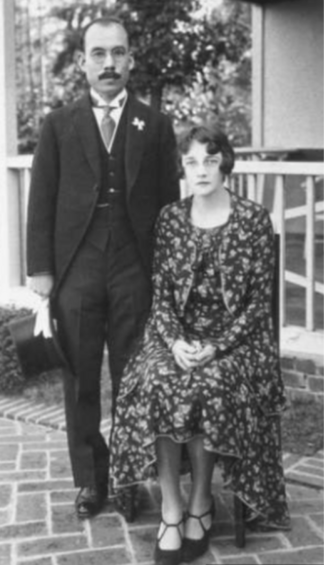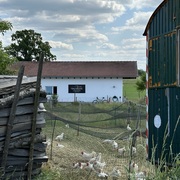
The Father of Japanese Whisky
In the winter of 1918, a young Japanese man called Masataka Taketsuru arrived in Glasgow with a mission to learn the art of Scotland’s master distillers. This man would later become known as the father of Japanese whisky.
Learning in Scotland
Born in Hiroshima in 1894, Masataka graduated from the Osaka Technical High School for Fermented Food Production in 1916. At that time, Scotch blended malt whiskies were flooding the Japanese market. And many drinks companies in Japan were trying to create something similar. After getting a job at Settsu Shuzo in Osaka, which had a plan to produce the first Japanese whisky, he was almost immediately sent to Scotland, where he enrolled as an organic chemistry student at the University of Glasgow. Remember that this was the early 1900s, so a voyage by boat between the two countries likely took the better part of a month to complete. Imagine being asked to do that in the inaugural year of your very first job. It is clear that Masataka had a lot of drive and a lot of courage.
During his first year at university, Masataka apprenticed at Longmorn distillery in Speyside to learn about malt whisky production, as well as with James Calder in Bo’ness to get acquainted with Coffey grain production. In 1920, Masataka apprenticed at Hazelburn distillery in Campbeltown to learn more about malt whisky production and blending. But that year wasn’t just about business for Masataka—it’s also when he met his future wife, Jessie Roberta Cowan, who was known as Rita. Masataka and Rita fell in love and got married in Glasgow against their families’ wishes. They then traveled together back to Japan, arriving at the Port of Kobe in November of 1920.
Return to Japan
Although Settsu Shuzo sent Masataka to Scotland to learn about whisky making, the company had to abandon its whisky project because of financial reasons. But in 1923, Masataka was recruited by Kotobukiya, which was later renamed Suntory, and given a 10-year contract. In his first year with this company, he oversaw the construction of the Suntory Yamazaki Distillery near Osaka. Six years later, the first authentic Japanese whisky, Shirofuda (White Label) was launched. However, the quality of the product proved unpopular among consumers, who were yet to be persuaded that whisky to rival Scotch could be produced in Japan, and sales were slow.
While most Scottish distilleries have abandoned coal fire distillation because it’s difficult to control the temperature, Yoichi still uses the method to this day, which gives the whisky its signature toasty flavor.
Nikka Whisky
As Masataka’s contract with Suntory was coming to an end, Rita pushed and inspired him to fulfill his true dream: to open a Japanese whisky distillery of his own. And so the couple set out to Hokkaido near the coast, in an area surrounded by mountains on three sides with a very similar climate to the Scottish Highlands. Not only did it have access to a ready supply of barley, coal and water, the cool coastal climate and peaty soils were ideal for growing barley and vital for replicating the aromas of the Scotch whiskies that Masataka had fallen in love with when in Glasgow. Masataka even planted heather on the site to make it more authentic. Yoichi distillery was completed in October of 1934.
Distillation began in 1936, but the first whisky wasn’t actually launched until 1940. While Yoichi’s first distillates were maturing, Masataka sold fruit juice made from local Hokkaido apples, while Rita gave English and piano lessons out of their home to make ends meet. Masataka’s juice company was then named Dai Nippon Kaju, aka the “great Japanese juice company.” He later shortened this name to Nikka in 1952.
At Yoichi Distillery, Masataka set up pot stills that used direct coal fire, similar to the operation he worked with at Longmorn. While most Scottish distilleries have abandoned coal fire distillation because it’s difficult to control the temperature, Yoichi still uses the method to this day, which gives the whisky its signature toasty flavor.
Rita passed away at the age of 64 on January 17, 1961. Later that year, Masataka released Super Nikka Blended Whisky in her honor. Masataka was, of course, shattered by Rita’s death, but he dedicated his energy to move forward with Nikka, just as his wife would have encouraged him to do.
After setting up Yoichi Distillery, Masataka turned his attention to his next project, the Miyagikyo distillery. He wanted to create a broader range of whisky styles to make Nikka’s blends more complex, so he decided to place this second distillery in a completely different environment. Located near Sendai in the northernmost part of Japan’s main island, Miyagikyo is situated at the intersection of two rivers and surrounded by rolling hills and lush forests. The whiskies that come from Yoichi carry some salinity from the sea air, while the whiskies distilled at Miyagikyo have a pure, smooth taste—partly from the environment and partly because the pot stills there are heated by steam at low temperatures. Until his death, Masataka continued to oversee whisky production at Nikka.
Death of a Legend
Masataka passed away on August 29, 1979, at the age of 85, just 10 years after the completion of the Miyagikyo distillery. But his legendary work has created a category of spirits that is only going to grow and get more popular with time. Now every time you sip on your favorite Japanese whisky—Nikka or otherwise—raise a glass to Masataka for making the delicious liquid possible.
..... Not Quite the End
In 2002 Masataka’s son, Takeshi Taketsuru, visited Scotland to follow in the footsteps of his father. He was the special guest at a reception for an exhibition celebrating the University’s historic links with Japan.
Takeshi also founded a University prize to be awarded annually in memory of his father. The prize is awarded to the student showing the best performance in the work placement element of the Master of Science in Chemistry.

